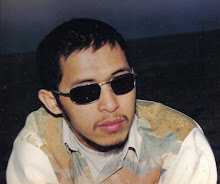
FIRST AID
WHAT IS FIRST AID?
Immediate help First aid - the care given before emergency medical help arrives - can literally mean the difference between life and death. But knowing the correct thing to do if someone has a nosebleed or cut is also important.
Saving lives
A blocked airway can kill someone in three to four minutes, but it can take more than eight minutes for an ambulance to arrive. So a simple procedure such as opening someone's airway can save their life while they're waiting for emergency medical help.
The latest government figures, from 2002, estimate 2.7 million people in the UK went to A&E because of an accident in their home.
Of these, 910,000 were aged under 16.
Sadly, almost 4,000 people in England and Wales died because of accidents in or around their home in 2004, according to the Office for National Statistics.
This means you're more likely to give first aid to someone you know than a stranger. Knowing what to do will allow you to react rapidly if an accident does happen.
What not to do
There are many misconceptions surrounding first aid, some of which can cause serious harm.
Top ten first aid misconceptions
You should put butter or cream on a burn. The only thing you should put on a burn is cold water - keep the butter for cooking.
If you can't move a limb, it must be broken/If you can move a limb, it can't be broken. The only accurate way to diagnose a broken limb is to x-ray it.
The best way to treat bleeding is to put the wound under a tap. If you put a bleeding wound under a tap you wash away the body's clotting agents and make it bleed more.
Nosebleeds are best treated by putting the head back. If you put the head back during a nosebleed, all the blood goes down the back of the airway.
A tourniquet is the best way to treat serious bleeding. It's harmful to stop the blood flow to a limb for more than 10-15 minutes.
If someone has swallowed a poison you should make them sick. If you make someone sick by putting your fingers in their mouth, the vomit may block their airway
If you perform CPR on someone who has a pulse you can damage their heart. The evidence is that it isn't dangerous to do chest compressions on a casualty with a pulse.
You need lots of training to do first aid. You don't - what you mostly need is common sense. You can learn enough first aid in ten minutes to save someone's life.
You need lots of expensive equipment to do first aid. You don't need any equipment to do first aid, there are lots of ways to improvise anything you need.
Top ten home accidents and injuries
Falls (1,248,000)
Strikes and collisions (530,000)
Cuts and tears (230,000)
Foreign bodies (128,000)
Acute overexertion, for example moving furniture (90,000)
Burns, scalds (84,000)
Pinching or crushing injuries (79,000)
Bites, stings (72,000)
Puncture wounds (54,000)
Suspected poisonings (33,000)

1 comment:
heloo ser... usa ko student nmo...
Post a Comment